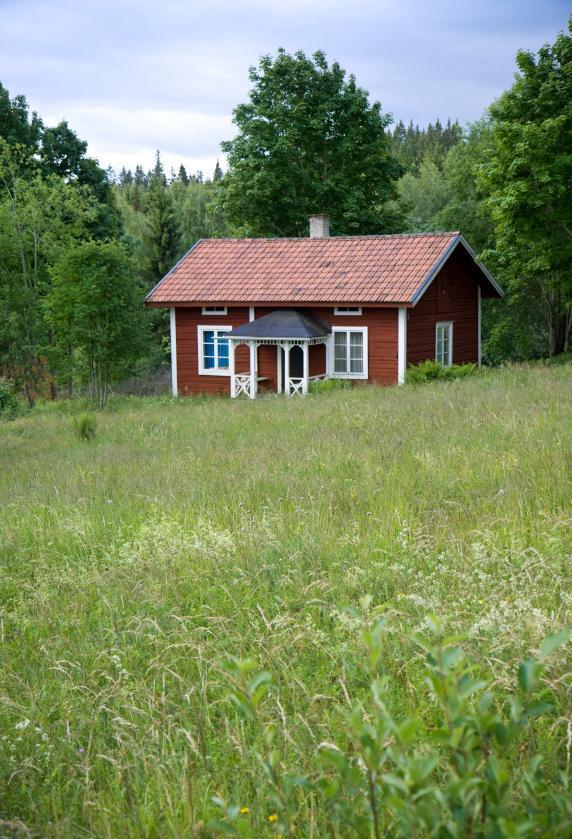Chernobyl Pluton radioactive dust is found in soil
When the Chernobyl nuclear reactor exploded in 1986 in the Ukrainian Soviet republic, radioactive elements were released into the air and scattered throughout the Soviet Union, Europe and even part of East South America.
More than 20 years later, researchers from Case Western Reserve University came to Sweden and Poland to learn about the radionuclide derived from Chernobyl that had settled down to the ground. The team found that the concentration of pluton in the soil in Sweden originated from a nuclear explosion much higher than in Poland.
Radionuclides appear in the soil from natural processes as well as from radioactive dust of nuclear tests. Gerald Matisoff, head of Case Western Reserve University's Department of Geosciences, and Lauren Vitko, Case Western Reserve assistant, and other members took soil samples from several locations in the two countries, examining the export Current and position of Xezi (137Cs), Pluton (239, 240Pu), and lead (210Pbxs).
Matisoff presented his findings on Monday, October 6, at the American Geological Society Meeting, American Soil Science Association, United States Agronomic Association, American Crop Science Association. , Bay Society and the Coast of the Geological Society in Houston. By looking at the complexity of radioactive dust, the rate at which it penetrates into soil, erodes and is pushed away by sediment, Matisoff's research helps.

Small hut next to the summer meadow in Sweden.The researchers found that the concentration of soil pluton in Sweden originated from the Chernobyl nuclear explosion much higher than in Poland.(Photo: iStockphoto / Marcus Lindström)
The first is dealing with various issues of community health, studying issues such as food transport, contact and hygiene as well as understanding geological consequences. These problems include measuring the erosion rate, the time when radioactive nuclides exist in stream habitats, the source of sediments found in the river as well as compiling documents and abstracts on radiation.
Next is to understand the difference of radioactive elements from events such as Chernobyl and radioactive dust generated from nuclear weapons tests in the 1960s.
The specimen collected by Matisoft's team provides insight based on several conditions, such as how radioactive nuclides get into the soil, from events like the Chernobyl disaster or from nuclear bomb tests, half-decay cycles of radionuclides and whether clay particles (eg 137Cs and 7Be) or organic particles (239, 240Pu and 210Pbxs) absorb them more; and soils that can hold these particles on the surface and allow them to permeate to layers below the surface.
The team looked at many types of soil in both countries, they found a piece of 239, 240Pu in the soil in Sweden that coincided with the Chernobyl disaster, but there was no similarity in the soil in Poland. Meteorological research shows that it rains in Sweden when radioactive clouds fly over the country. A large amount of radioactive nuclides have been released, and much less plutonium has fallen to Poland when the cloud extends to its borders.
Matisoff said the team's findings are just the beginning, asking many questions. His goal is to use this research for larger projects with more important and definitive findings.
The project is funded by the National Science Foundation.
- Finding something extremely dangerous at Chernobyl, touching might die
- Unusually high radioactive dust in Europe confused experts
- Uncover the secret to help animals survive the Chernobyl disaster
- Radiation is still in agricultural products after 25 years
- Chernobyl is a human disaster, but good news for animals here
- Taking giant steel blocks weighing 36 thousand tons on Chernobyl atomic reactor
- Why did the Chernobyl atomic disaster not kill all plant species?
- Shorten the time for soil cleaning by bio-plants
- Japan spent 970 million USD to build a place to store contaminated soil
- The mystery behind the world's most dangerous object
- Giant catfish over 2m long due to Chernobyl radiation?
- I was burned by a contaminated mosquito at Chernobyl
 'Fine laughs' - Scary and painful torture in ancient times
'Fine laughs' - Scary and painful torture in ancient times The sequence of numbers 142857 of the Egyptian pyramids is known as the strangest number in the world - Why?
The sequence of numbers 142857 of the Egyptian pyramids is known as the strangest number in the world - Why? History of the iron
History of the iron What is alum?
What is alum?